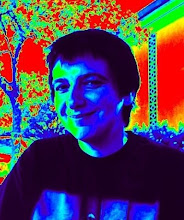The mystery of communication

For the first time in a couple of years at least, I experienced what it is like to do creative work purely for pleasure and enjoyment, without being motivated by rage or by the need to defend a basic right to existence. Just that simple joyous feeling of liking what one is doing, of curiosity and playfulness. The sense that the thing itself in fact does not matter much, that the process of doing, of learning, of sharing thoughts and ideas, is more fulfilling than achieving any specific goal. A very taoist idea: the path is what matters not the goal. Well, it is possible, still possible, it seems. Maybe it requires very special circumstances, like this week of suspended reality, immersed into a world where time flows at a naturally slow pace, where work progresses along with long walks on the beach of a lake that looks like a sea on a surprisingly sunny day amidst bouts of autumn rain, where there is science and there is a lot of room for other forms of culture floating and mixing inside the same bubble of reality. I wonder if for some lucky few it may always be like that, whether there may always be a rich cosmos where the human and the noetic blend harmoniously instead of being at each other's throat, where there is so much to share. For once, it no longer makes me feel like trying to walk my way through a barren landscape. I had nearly convinced myself that I had been running after an illusion for a good part of my life, for seeking this type of experience. I had almost admitted to myself that I had dreamed up a chimera that cannot exist. So for once, finally, I am just writing because I am happy instead of indulging once again in that whole other spectrum of feelings I've been reversing down the pages of this blog, and maybe I'll stop being such a bore, for a time. It is a mystery what makes communication possible between people, what a substratum of shared experiences is needed to establish connections at levels that are deeper than the skin of reality. That is, indeed, what culture is all about: culture is what makes communication possible.

There's a whole spectrum of scientific disciplines that developed around the modern need for a theoretical understanding of communication and information transmission. This is a need that developed historically as soon as the technology for telecommunication became available. The existence of the first long distance telephone networks and the related problems of transmission of signals without loss of information was the first engineering challenge that called for a better understanding of what a message is, of how information is encoded, transmitted, and decoded. This early origin of the theory of information was followed historically by the first global war where science played a major role in determining the outcome and the resulting geopolitical equilibrium for the rest of the century. Within that war, a science of encoding and decoding messages became a crucial part of the arsenal that decided the outcome of battles. And if by 1951 Marshall McLuhan's "Mechanical Bride" had started to teach us how the medium is the message, the process of abstraction of the notion of communication had already been perfected in 1949, when Shannon published his mathematical theory of communication, which is a scientific milestone of the 20th century and quite a beautiful book to read.

The theory of telecommunication engineering merged in this way with the theory of coding and decoding procedures and created an intricate network of overlapping notions: entropy of languages, Kolmogorov complexity, Turing machines, codes from algebro-geometric curves. It is a rich universe of our contemporary scientific culture that I am only slowly beginning to explore. The development of computers and information technology proceeded hand in hand with the mathematical theory, until the more recent develoments paving the way to the jump into a realistic quantum computation technology. So far I only took a glimpse of a vast landscape seen through a keyhole, but finding a keyhole shaped like the state of one's present understanding is all one needs to unlock the door that leads to the next world of learning.

For a pleasurable excursus into the interplay between the development of the mathematical theory of information, coding, and communication, and the cybernetic movement, I have been entertaining myself with the recent book of Triclot "Le moment cybernétique : La constitution de la notion d'information", which I got on my recent Paris trip. A more philosophically oriented work, it consists of an informative excursus from the early days of communication theory and cybernetics, across Turing, the first comparisons between computers and the brain (see von Neumann's Silliman lectures), the role of entropy, the theory of automata, all the way to final reflections upon the impact on society and the political implications of this whole branch of science, on which already Wiener had pronounced himself in very stimulating reflections.

